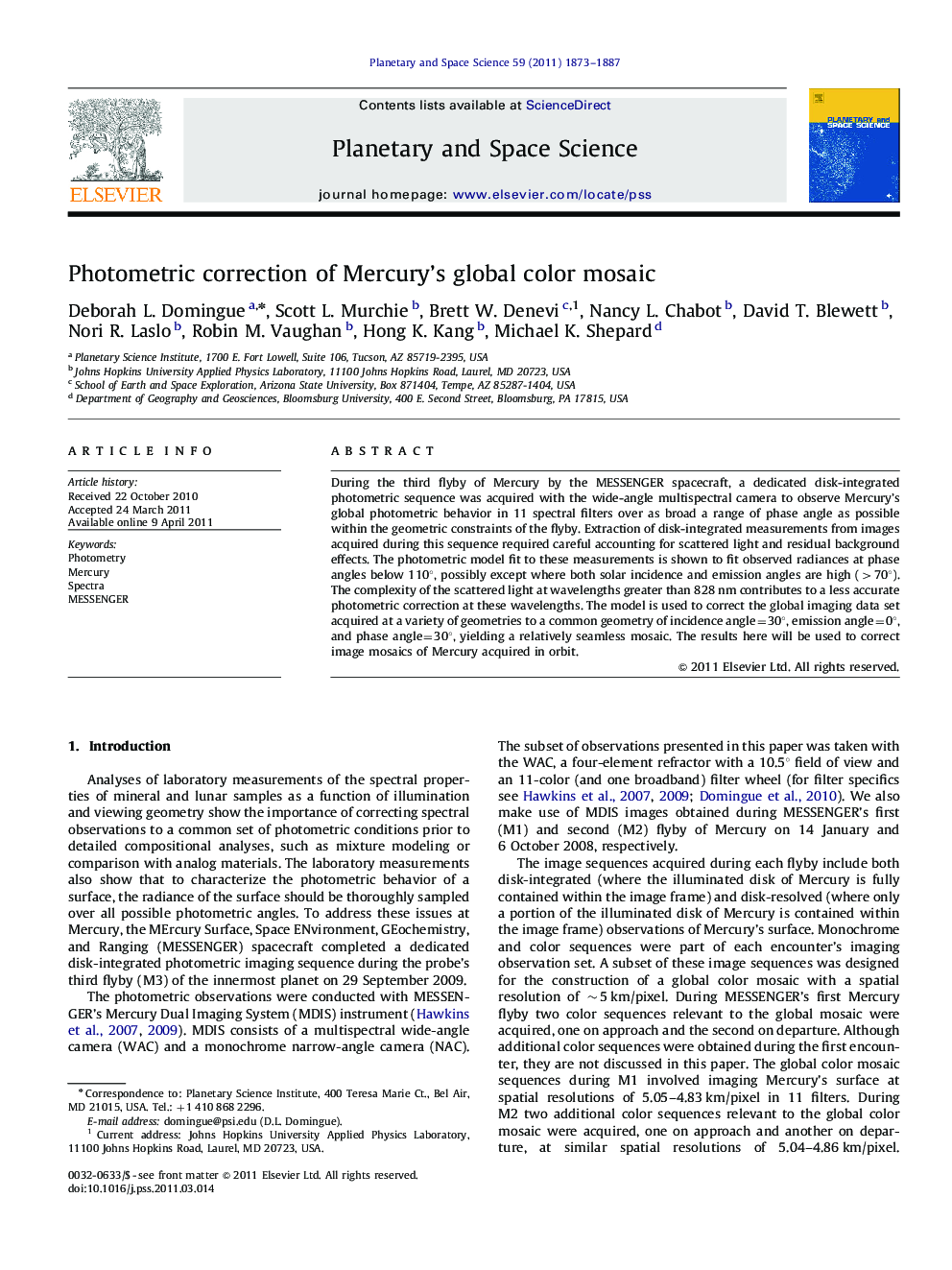| Article ID | Journal | Published Year | Pages | File Type |
|---|---|---|---|---|
| 1781595 | Planetary and Space Science | 2011 | 15 Pages |
During the third flyby of Mercury by the MESSENGER spacecraft, a dedicated disk-integrated photometric sequence was acquired with the wide-angle multispectral camera to observe Mercury's global photometric behavior in 11 spectral filters over as broad a range of phase angle as possible within the geometric constraints of the flyby. Extraction of disk-integrated measurements from images acquired during this sequence required careful accounting for scattered light and residual background effects. The photometric model fit to these measurements is shown to fit observed radiances at phase angles below 110°, possibly except where both solar incidence and emission angles are high (>70°). The complexity of the scattered light at wavelengths greater than 828 nm contributes to a less accurate photometric correction at these wavelengths. The model is used to correct the global imaging data set acquired at a variety of geometries to a common geometry of incidence angle=30°, emission angle=0°, and phase angle=30°, yielding a relatively seamless mosaic. The results here will be used to correct image mosaics of Mercury acquired in orbit.
► A dedicated photometric image sequence was acquired during MESSENGER's third Mercury flyby. ► This sequence provided sufficient observations to derive photometric corrections to the imaging data. ► The corrections enable the construction of useful global color mosaics.
